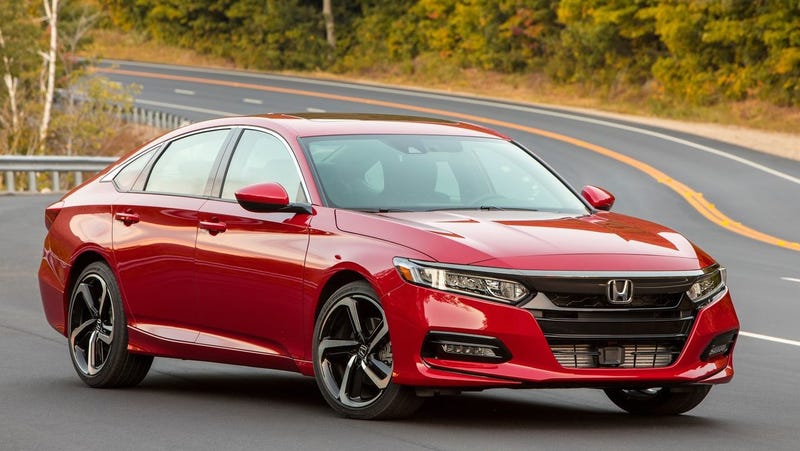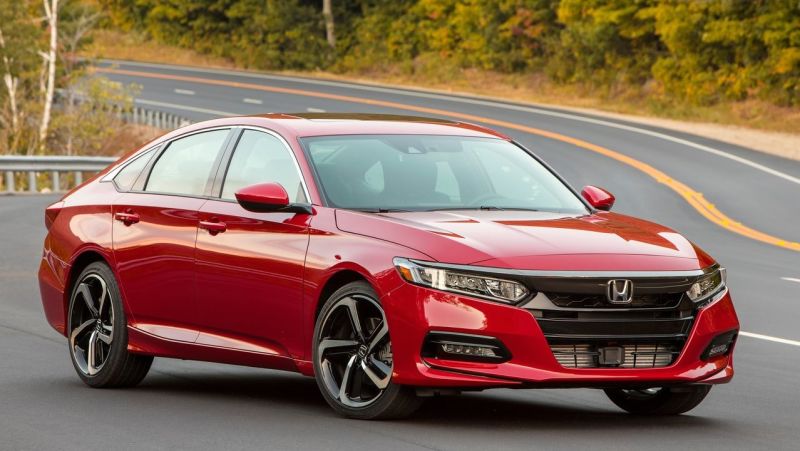
It seems to be a common complaint these days that modern cars are getting too big and too heavy. And that’s mostly true—the only car to actually stick to its weight seems to be the Mazda Miata. But cars aren’t actually getting much heavier—if you ignore the nameplate.
It is completely factual to say that the Honda Accord has gotten larger and heavier over the years. But at the same time it’s not really the old Accord it was—in fact, it moved up an entire EPA segment in physical size, as Forbes recently pointed out. The cargo volume of the car has grown so much, the Accord is now classified as a large car according to the EPA’s fuel economy guide for sedans, where it used to be classified mid-size.
With that in mind, it could be considered unfair to compare a modern Accord to that of an older generation, as technically they would no longer be competing in the same class. The best way to consider the argument that cars aren’t actually getting much heavier is to eschew model names completely, and just focus on size classification.
If we look at Honda’s current mid-size car, which happens to be the Honda Civic sedan now, and compare it to an older Honda Accord, the weight hasn’t gone up that much, as Forbes points out:
Back in 2000, a Honda Civic sedan had 90 cubic feet of passenger volume and just 9 cubic feet in the trunk. The 2019 Civic sedan has 98 cubic feet for people and 15 cubic feet out back. As it has grown, the Civic gained more than 400 pounds going from 2,339 to 2,771 pounds. While the nameplate has remained the same for more than 40 years, today’s Civic isn’t really the same kind of vehicle it was in prior years.
A far more appropriate comparison would be to take today’s Civic against a 2000 Accord which had just 102 cubic feet of passenger space and 14 cubic feet in the trunk. That 18-year old Accord sedan weighed 2,987 pounds.
The 2019 Civic also has a many features not available on the old Accord including driver assist systems like adaptive cruise control, lane keeping assist, and backup cameras along with things like heated seats, 10 airbags and the ability to protect occupants in a crash that would kill people in that old Accord.
Advertisement
Forbes goes on to point out that when you factor in all of the additional safety and entertainment equipment on a modern car, it’s really quite surprising how light they tend to be.
This is true of many cars. Over time they grow in size and newer, smaller models take their place at the bottom of the spectrum. The Honda Fit wasn’t even a thing in America in 2000, for example.
The best way to frame it, as Forbes does, is that modern cars offer more value per pound than ever before—in equipment, cargo, efficiency, safety and performance. Automakers have just pushed their model names into bigger segments to keep them competitive in a never-ending marketing machine of seemingly endless improvement.
Advertisement
There are downsides and tradeoffs, of course. A modern Honda Civic Si won’t have quite the tossability it did in 2000 simply for being bigger, much like how the new 3 Series is as big as a 7 Series used to be. And even if these new cars are technically in different classes than their predecessors were, it feels like fun small cars are almost an endangered species.
At least the modern stuff has tons of airbags, though.













